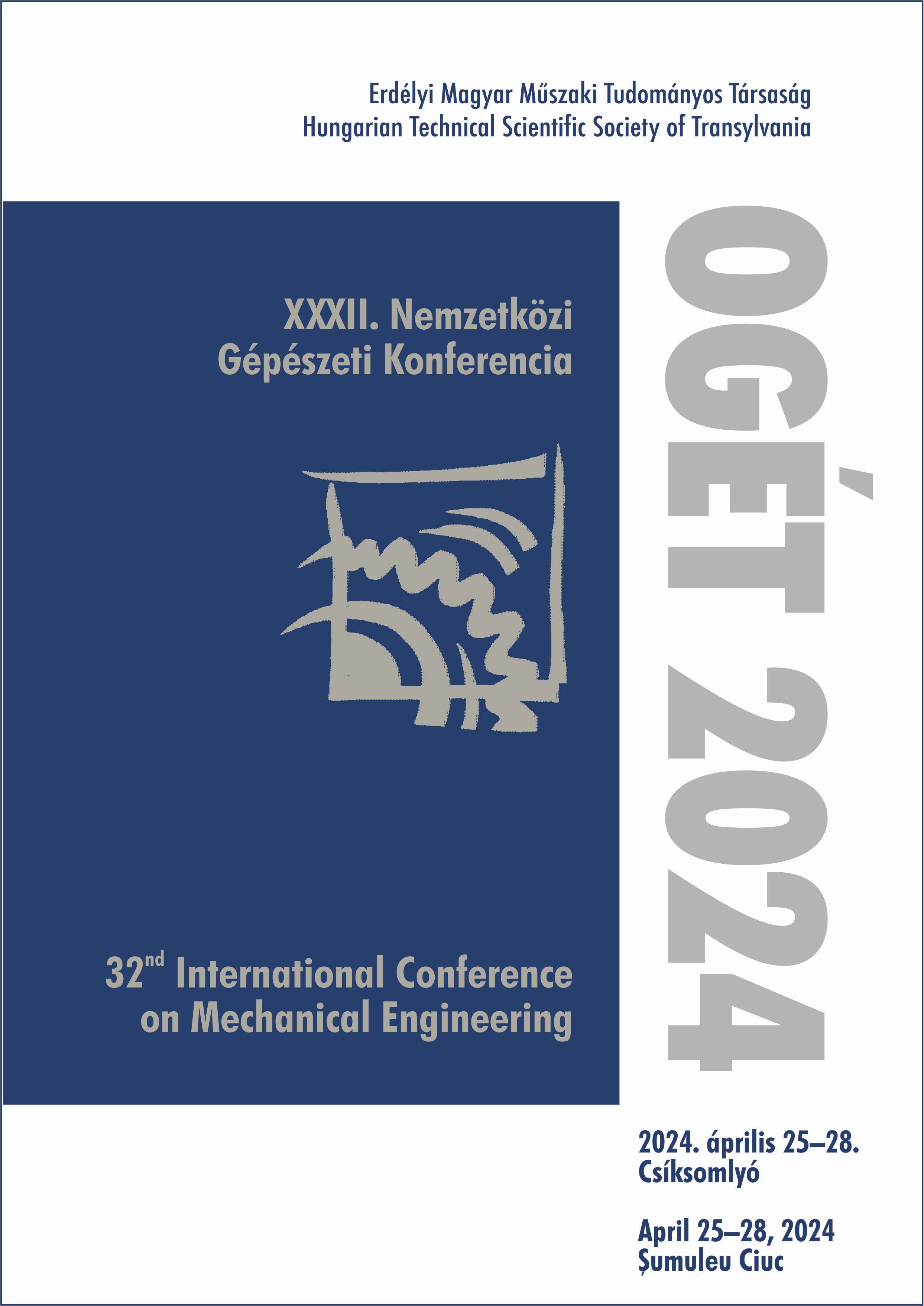Fúrásindukált delamináció vizsgálata a megtámasztási körülmények figyelembevételével üvegszál erősítésű polimer (GFRP) kompozitokban
Investigation of drilling-induced delamination considering mechanical supporting conditions in glass fibre reinforced polymer (GFRP) composites
Keywords:
Delamination, Drilling, Support plate, Digital image processing, GFRP, /, Delamináció, Fúrás, Támasztóelem, Digitális képfeldolgozásAbstract
Due to their excellent mechanical properties, fibre reinforced polymer (FRP) composites are widespread in almost every sector of the industry. However, during the drilling of these materials, a number of undesirable geometrical errors may occur, of which delamination (layer separation) is considered the most severe one, since this phenomenon can lead to a significant decrease in the strength of the composite. The main goal of this study is to explore the relationship between mechanical support conditions and drilling-induced delamination.
Kivonat
A szálerősítésű polimer (FRP) kompozitok kiváló mechanikai tulajdonságaiknak köszönhetően az ipar szinte minden területén elterjedtek. Ezen anyagok fúrása során azonban számos nemkívánatos geometriai hiba keletkezhet, amelyek közül a delamináció (rétegleválás) tekintett a legsúlyosabbnak, hiszen ezen jelenség a kompozit jelentős mértékű szilárdságcsökkenésével járhat. Ezen tanulmány fő célja a megtámasztási körülmények és a fúrásindukált delamináció közötti kapcsolat feltárása.
References
N. Geier, J. P. Davim, és T. Szalay, „Advanced cutting tools and technologies for drilling carbon fibre reinforced polymer (CFRP) composites: A review”, Compos. Part Appl. Sci. Manuf., köt. 125, o. 105552, okt. 2019, doi: 10.1016/j.compositesa.2019.105552.
J. Xu és mtsai., „A critical review addressing drilling-induced damage of CFRP composites”, Compos. Struct., köt. 294, o. 115594, aug. 2022, doi: 10.1016/j.compstruct.2022.115594.
M. Altin Karataş és H. Gökkaya, „A review on machinability of carbon fiber reinforced polymer (CFRP) and glass fiber reinforced polymer (GFRP) composite materials”, Def. Technol., köt. 14, sz. 4, o. 318–326, aug. 2018, doi: 10.1016/j.dt.2018.02.001.
M. Aamir, M. Tolouei-Rad, K. Giasin, és A. Nosrati, „Recent advances in drilling of carbon fiber–reinforced polymers for aerospace applications: a review”, Int. J. Adv. Manuf. Technol., köt. 105, sz. 5, o. 2289–2308, dec. 2019, doi: 10.1007/s00170-019-04348-z.
B. Luo, Y. Li, K. Zhang, H. Cheng, és S. Liu, „Effect of workpiece stiffness on thrust force and delamination in drilling thin composite laminates”, J. Compos. Mater., köt. 50, sz. 5, o. 617–625, márc. 2016, doi: 10.1177/0021998315580449.
R. Teimouri és S. Amini, „Analytical and experimental approaches to study elastic deflection of thin strip in ultrasonic-assisted drilling process”, Proc. Inst. Mech. Eng. Part E J. Process Mech. Eng., köt. 233, sz. 1, o. 21–34, febr. 2019, doi: 10.1177/0954408917739453.
E. Capello, „Workpiece damping and its effect on delamination damage in drilling thin composite laminates”, J. Mater. Process. Technol., köt. 148, sz. 2, o. 186–195, máj. 2004, doi: 10.1016/S0924-0136(03)00812-4.
F. Wang, J. Yin, J. Ma, és B. Niu, „Heat partition in dry orthogonal cutting of unidirectional CFRP composite laminates”, Compos. Struct., köt. 197, o. 28–38, aug. 2018, doi: 10.1016/j.compstruct.2018.05.040.


